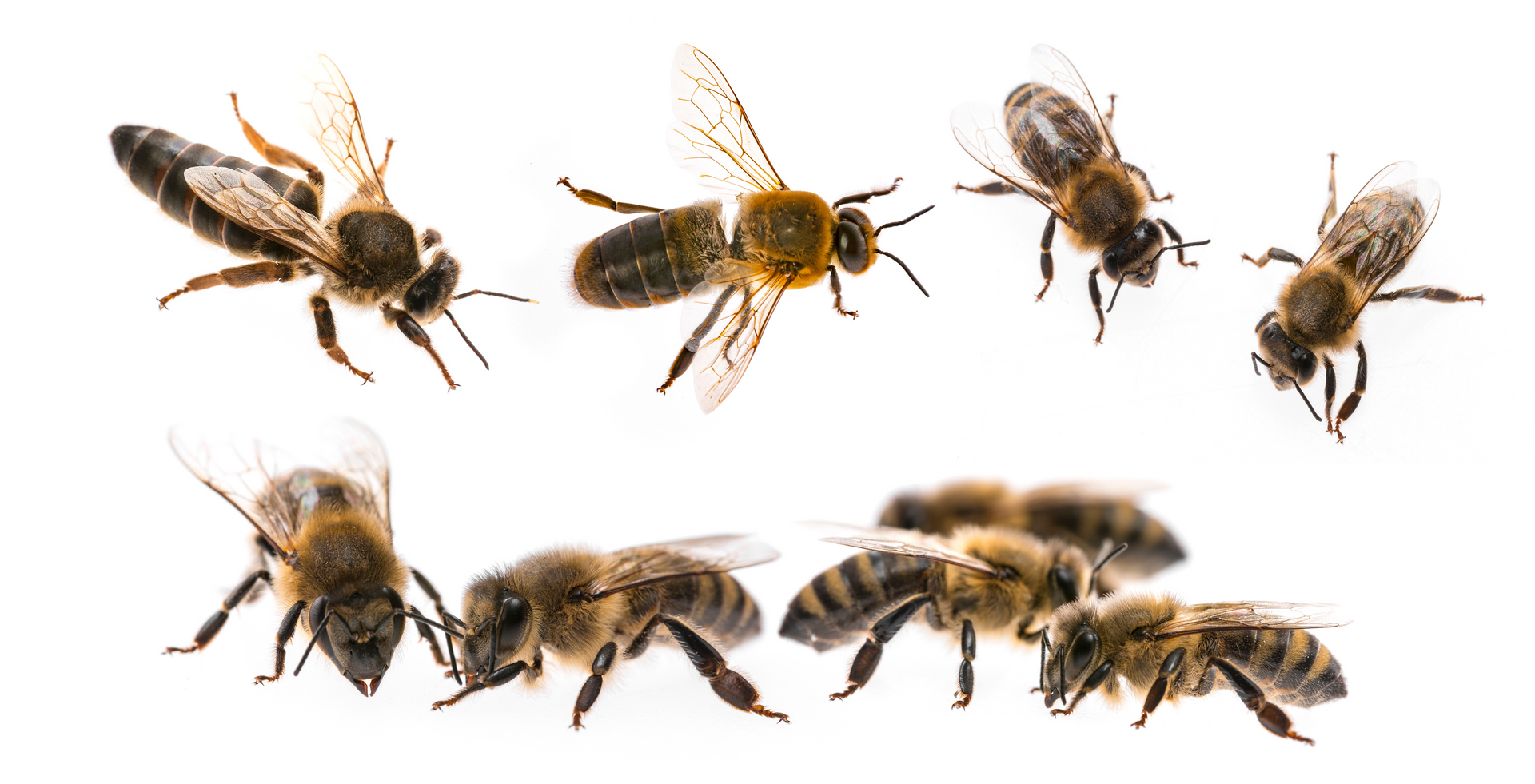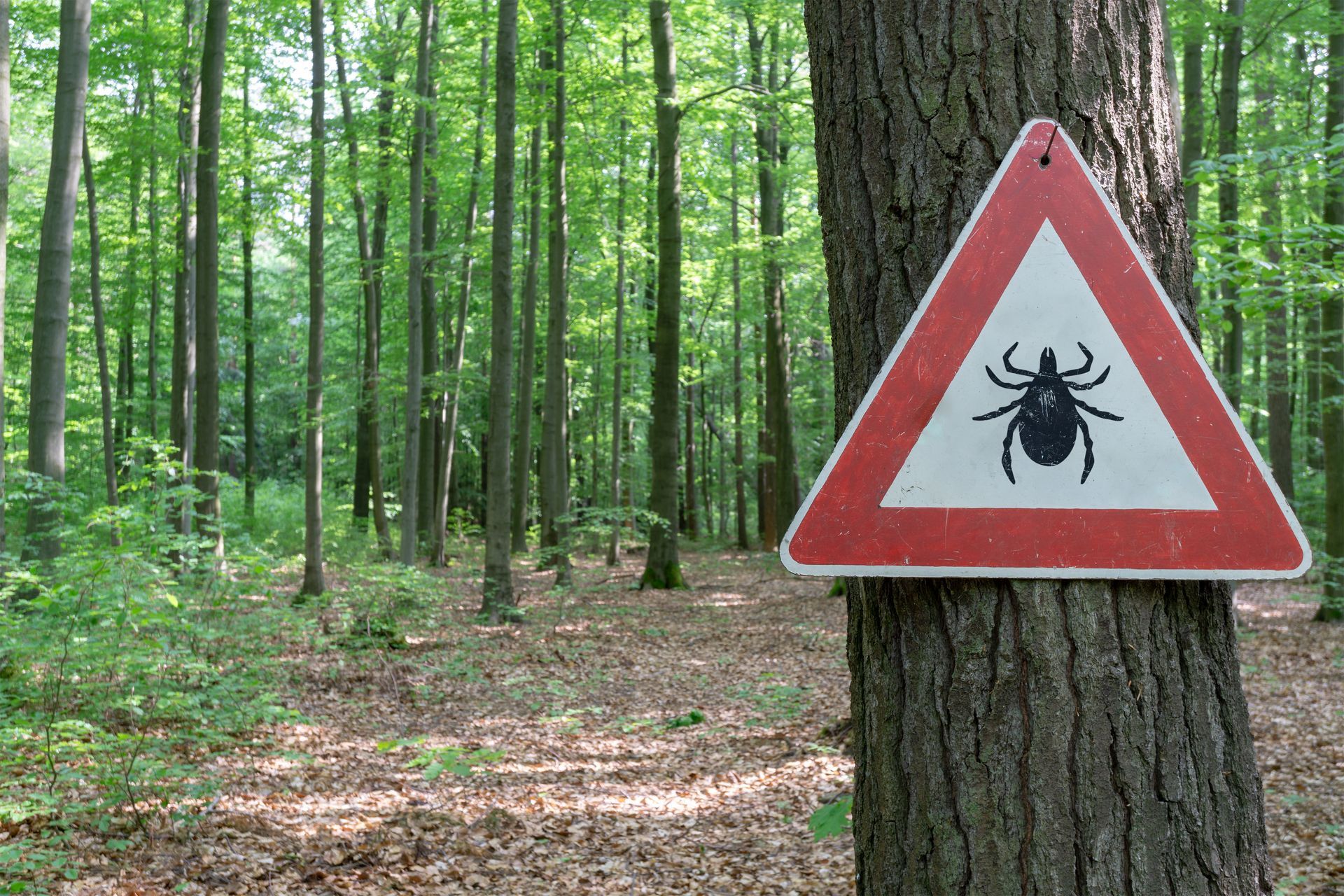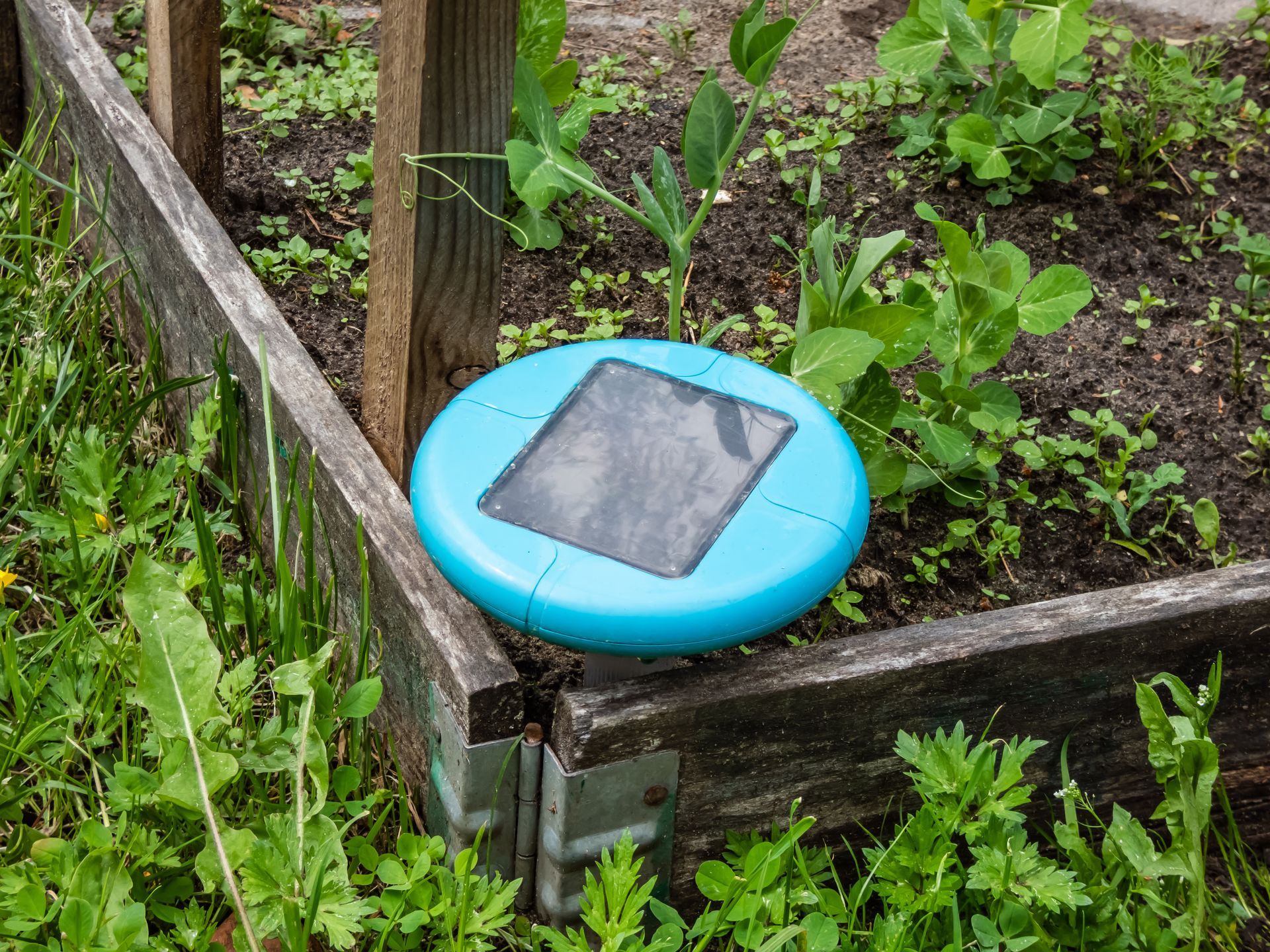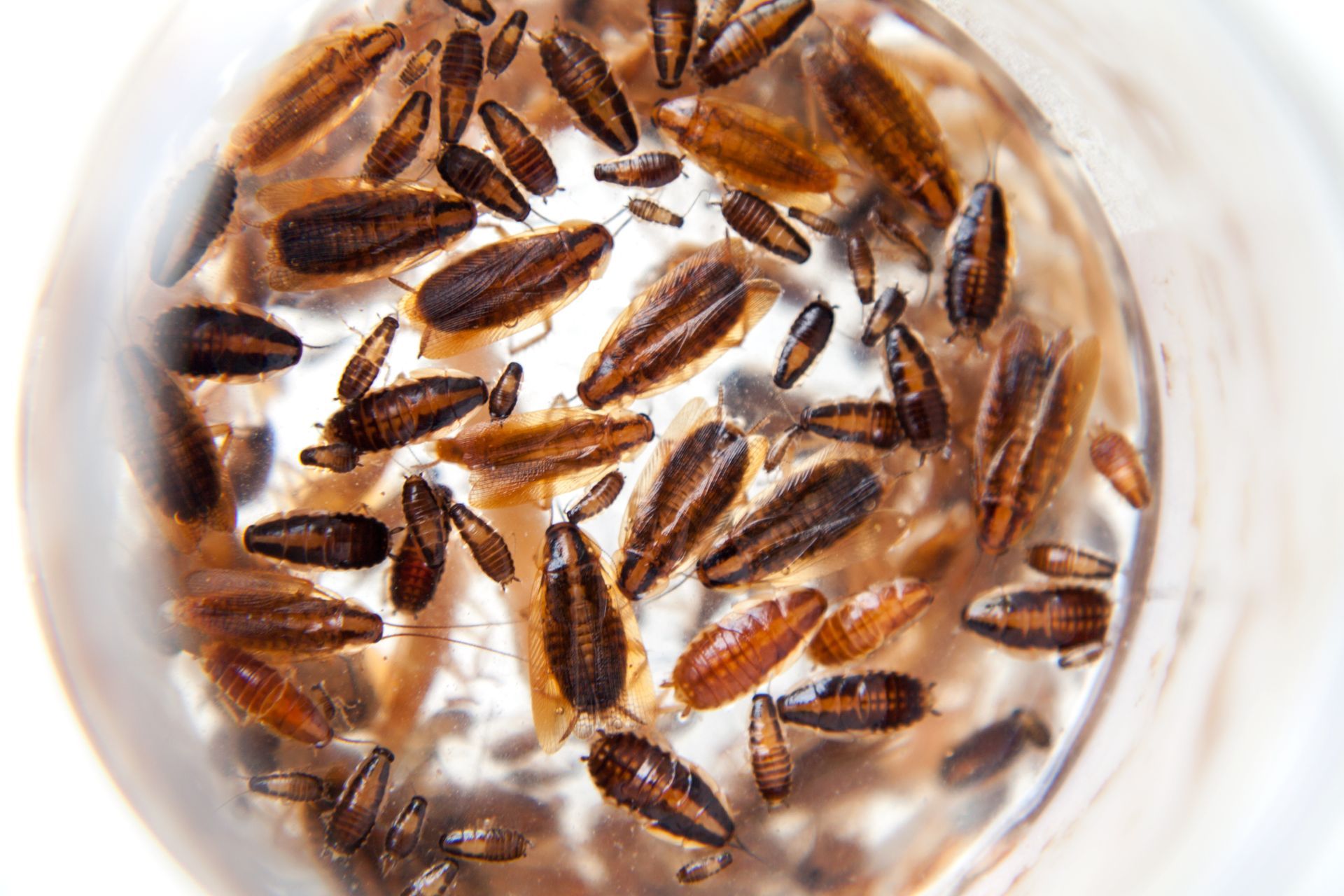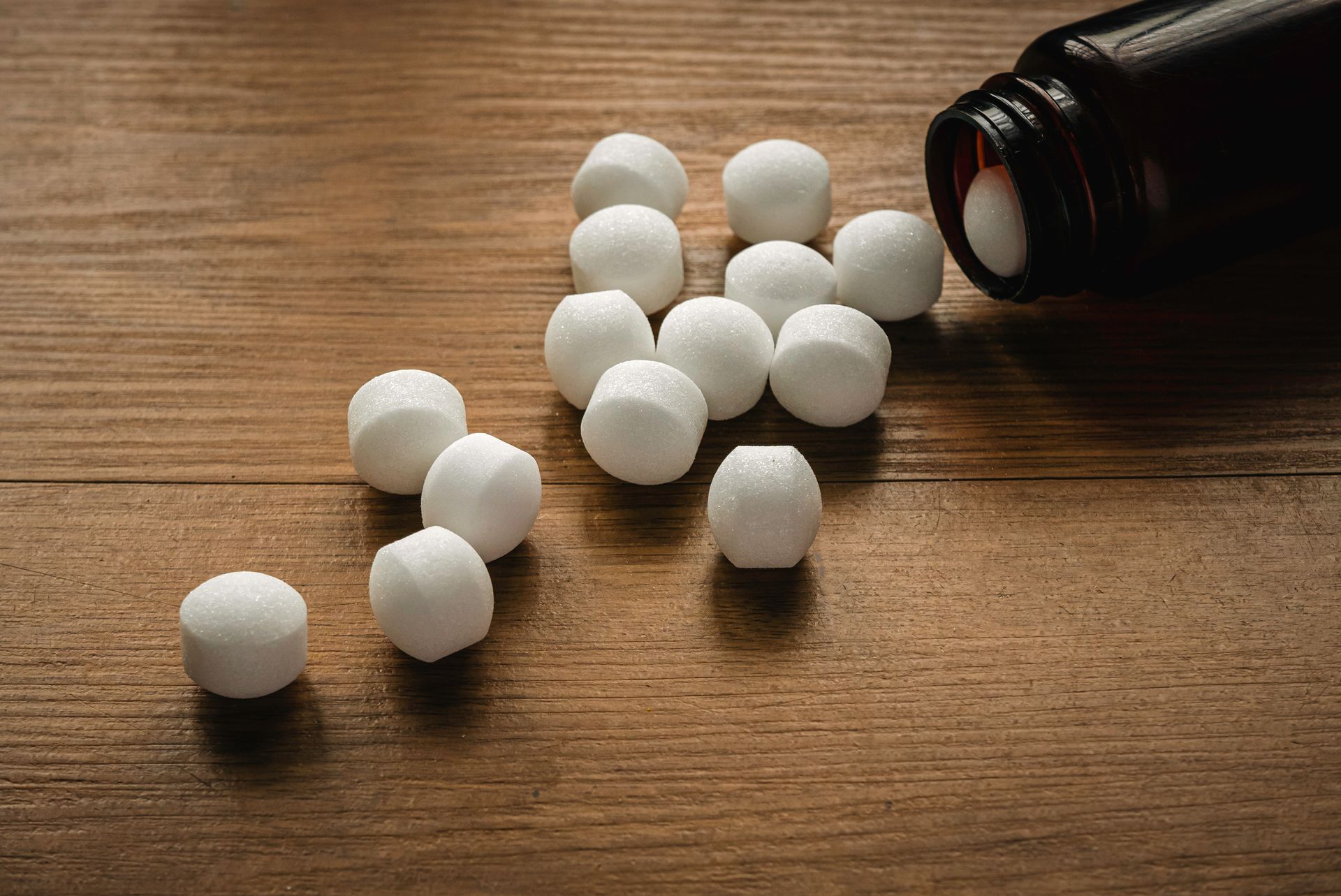What Do Termite Larvae Look Like?
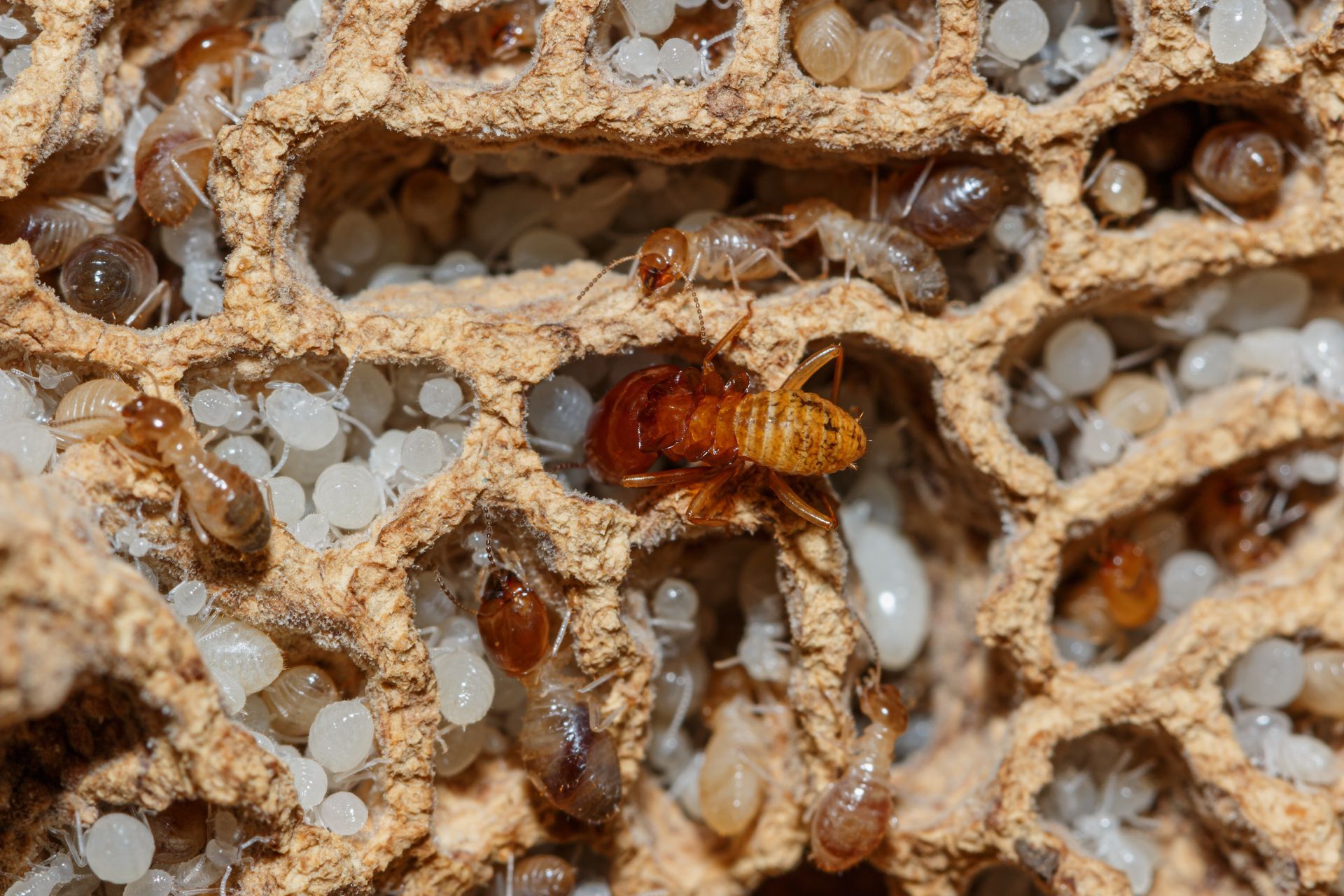
Baby termites, also known as termite larvae, play a critical role in the lifecycle and growth of a termite colony. Termites undergo a gradual metamorphosis that starts once they hatch from their eggs and progress through nymphal stages to adulthood. In these early stages, the young termite larvae are different from the larvae of insects that undergo complete metamorphosis, like flies. Instead of changing all together in a pupal stage, they simply shed their exoskeletons as they develop into adulthood.
Discovering termite larvae in your home is a clear sign of a potentially severe infestation because it indicates an existing colony that has reached the stage of reproduction. When an infestation gets to this point, it can threaten both your property's structural integrity and the inhabitants' health. Termites are particularly active during warm, humid weather which leads to an increase in larvae and the expansion or creation of new colonies. This can result in extensive and costly damage if not addressed promptly.
Identifying Termite Larvae
Identifying termite larvae is crucial for early detection and control of termite infestations. These larvae resemble smaller versions of worker termites, primarily because they are in an immature stage and have not fully developed. Like worker termites, termite larvae have a translucent white color, but their bodies are smaller and softer in the larval stages. Their bodies are underdeveloped with legs that are too short to use for movement and an undeveloped exoskeleton that is not rigid like their adult counterparts.
Termite larvae are typically found deep within termite nests being cared for by worker termites. They are fed regularly to ensure their development as they undergo molting before eventually joining one of the termite colony castes: soldier, worker, or reproductive. While they are in the larval stage, they can be mistaken for other insects due to their appearance. Therefore, correctly identifying them is key to implementing effective pest control measures.
Termite Larvae Shape
The shape of termite larvae is a key aspect in their identification that sets them apart from other similar-looking insects. Unlike ants, termite larvae have soft uniform bodies that do not pinch at the abdomen. Their outer shell remains soft without a hardened exoskeleton until they reach adulthood. They also feature a distinct head that is clearly differentiated from their body along with six legs. Additionally, termite larvae possess straight antennae which is another differentiator that separates them from ant larvae. If the insects have wings, they are not termite larvae as only fully mature reproductive termites, also known as alates, develop wings.
Termite Larvae Color
The color of termite larvae is similar to that of a mature termite, so it is not the best feature for accurate identification. They typically exhibit a white, almost translucent coloration which gets less opaque as termites mature into workers. Soldier termites, on the other hand, are much more easily identified because they have noticeably darker heads attached to their pale white bodies. If the insects in question are darker in color, they might be booklice or ants.
Termite Larvae Size
The size of termite larvae is a critical factor in distinguishing them from other stages of termite life and different insects. Generally, termite larvae are quite small and measure less than 1/10 of an inch (2.5 mm) in length. This size makes them significantly smaller than adult worker termites, which are typically around ¼ inch (6.4 mm) long and much smaller than reproductive termites that can grow up to half an inch (13 mm). It’s important to note that if an insect is larger than this, it's likely not a termite.
When termites first hatch, the larvae are about the same size as the eggs they hatch from. These eggs are very small, white, and often hidden deep within termite colonies. This makes them challenging to locate but if you do come across termites near a cluster of eggs and notice that they are roughly the same size as these eggs, it's likely that you've identified termite larvae.
Termite Larvae Location
Termite larvae are typically found deep inside termite mounds or colonies. These nests provide a safe and protected environment for the larvae which make it extremely rare to see them outside of this setting. Mature termites are responsible for the care of these larvae and feed them a diet rich in cellulose until they develop into the later stages of nymphs which can move around and eventually leave the mound.
The location of termite larvae varies depending on the species. For example, subterranean termites usually conceal their eggs and larvae within underground colonies that are far away from human dwellings. On the other hand, drywood and dampwood termites are more likely to house their colonies and larvae within the walls and wooden structures of a building they infest. This means that the larvae of these termite species are more likely to be found inside houses once damage is severe enough that wood starts to deteriorate.
Termite Larvae vs Other Bugs
When distinguishing between termite larvae and other common household bugs, understanding the subtle differences in appearance, behavior, and habitat is key to accurate identification.
Termite Larvae vs Ant Larvae
Differentiating between termite and ant larvae is crucial because they are commonly mistaken for each other in the early stages of their lives. Termite larvae resemble miniature versions of adult worker termites, complete with a segmented head, legs, and antennae. In contrast, ant larvae are more grub-like in appearance. They lack distinct features such as legs or eyes and do not have a separate, segmented head. Additionally, ant larvae are usually covered in tiny hairs, a characteristic not found in termite larvae.
Termite Larvae vs Maggots
Distinguishing between termite larvae and maggots can be challenging due to their similar off-white color and worm-like shape, but there are key differences that can aid in identification. Maggots lack a distinct head and are completely legless. They are characterized with a more uniform and unsegmented body. They resemble short white worms that are found on trash and organic debris. In contrast, termite larvae have a more clearly segmented body and possess six legs. They are fed cellulose by adult worker termites and are rarely visible outside of the colony.
Termite Larvae vs Booklice
Booklice, while often found around wood like termites, do not actually feed on the wood itself. Instead, they consume the fungi that grow on damp wood and paper materials. A key indicator that you're dealing with booklice rather than termite larvae is the absence of wood damage. Booklice are also more likely to be found in larger groups exposed in the open. Termite larvae on the other hand, are rarely found exposed without the presence of adult termites. If you observe a cluster of small, wood-dwelling insects without noticeable wood damage and in relatively open areas, they are more likely to be booklice than termite larvae.
Termite Larvae vs Powderpost Beetle Larvae
Differentiating between termite larvae and powderpost beetle larvae can be tricky since both feed on wood and have some similarities in appearance. However, a closer look reveals distinct differences. The most notable distinction lies in their shape and texture. Powderpost beetle larvae are characterized by their C-shaped, grub-like form which is quite different from the more segmented and legged appearance of termite larvae. Additionally, powderpost beetle larvae have tiny spines along their back which is a feature not present in termite larvae.
Indicators of Termite Larvae
Identifying the presence of termite larvae in your home often begins with spotting adult termites and signs of termite activity, as their presence typically indicates a colony with larvae. These signs include:
- A hollow sound when tapping on wooden structures
- Hollow tunnels inside of decaying wood
- Wood that is rotting and easy to break apart
- Tiny holes that breach wooden surfaces
- The presence of tiny wooden pellets around these holes.
- Mud tubes reaching from the ground along walls, window and door frames, or wooden furniture joints
- Misaligned doors and windows
- Floors and ceilings that sag or exhibit creaky sounds
In early stages of infestation, these signs can be subtle and difficult to detect. Therefore, regular professional inspections are recommended to prevent extensive termite damage and avoid costly extermination and repair bills in the future. A professional pest control service can accurately identify and effectively treat termite infestations, ensuring the complete removal of both adult termites and their larvae.
How to Check for Termite Larvae
To check for the presence of termite larvae in your home, a thorough inspection of areas where termites are likely to live is essential. While professional exterminators are best equipped to identify termite infestations accurately, you can perform a basic inspection to look for signs. Here are some steps to guide you:
- Inspect Key Areas: Look around windowsills, door frames, support beams, and junctions where concrete structures meet wood. Use a flashlight to examine cracks and dark areas for signs of termites.
- Check Damp Locations: Termites are attracted to moisture as it results in wood rot, so pay special attention to the basement, crawl spaces, under porches, decks, fences, and any other damp areas in your home.
- Listen for Hollow Sounds: Gently tap on wood surfaces or walls with a screwdriver and listen for hollow or rustling noises, which might indicate the presence of termites or larvae inside the wood.
- Look for Wood Damage: Inspect all wooden structures and look for signs of evident damage, rot, or signs of termite activity like exit holes, mud tubes, and termite frass.
Remember, termites can live deep within walls and remain undetected for years, so the absence of visible signs of a termite infestation doesn't always mean your home is termite-free. Regular inspections by a pest control professional are recommended for early detection.
The Life Cycle of Termite Larvae
The life cycle of termite larvae is a fascinating process of growth and transformation within the termite colony. After termite eggs hatch, the emerging young are known as termite larvae or nymphs. Their development involves several stages:
- Molting Process: Each larva undergoes a series of molts, shedding its exoskeleton as it grows. This process is crucial for their transition into different roles within the colony.
- Role Determination: The termite king and queen use pheromones to direct the future role of each larva. These roles include becoming workers, soldiers, or reproductive termites (alates).
- Worker and Soldier Development: The majority of larvae become workers, fulfilling the colony's primary need. Some worker termites may later transform into soldiers if the colony requires additional defense.
- Reproductive Development: Larvae destined to become alates molt to develop wings and eyes, preparing for swarming and reproduction. Others become secondary reproductives to assist in egg production. In certain situations, worker termites might become tertiary reproductives to further support the termite queen's egg-laying capacity.
- Regression to Workers: Not all nymph termites evolve into reproductives. Depending on the colony's needs, some termite nymphs might undergo a regressive molt, losing their wing buds and becoming termite pseudergates or "false workers," thereby increasing the workforce of the colony when needed.
This complex lifecycle is integral to the survival and expansion of the termite colony, with each member playing a specific and vital role.
What Do Termite Larvae Eat?
Termite larvae primarily feed on cellulose which is a key component found in wood. When this occurs naturally, this diet positions termites as natural "recyclers" of wood that transform cellulose into organic matter that can be used to fertilize the growth of new plants. However, when termites target structural wood in homes or other personal properties, their feeding habits can lead to significant damage. It's important to note that termite larvae are not capable of consuming cellulose independently. They rely on worker termites within the colony to collect the food and break it down to feed it to the larvae.
Controlling Termite Populations
Controlling termite populations is crucial for preventing long-term structural damage to homes. Termite larvae require constant feeding and protection to survive, and their presence often indicates an active infestation that can silently wreak havoc over time. Addressing any sign of termites promptly is essential to mitigate this risk. For effective elimination and control, enlisting professional assistance is highly recommended. Pest control experts specialize in identifying signs of termite activity and the conditions that attract them. A thorough termite inspection by a professional can reveal hidden infestations and potential vulnerabilities in a home's structure. Additionally, pest control services can provide treatments and preventative measures to protect the home from future termite damage.
Contact EcoGuard Pest Management if You are Dealing with Termites
If you suspect any termite activity in your home, don't hesitate to reach out to EcoGuard Pest Management. Our team of experts is equipped with the knowledge and tools necessary to effectively identify, treat, and protect your home against termite infestations. With EcoGuard Pest Management, you can ensure your home is safeguarded against these pests that can destroy your home and cost you thousands in expensive repairs and remediation. Contact us today to secure your property and enjoy peace of mind.
Termite Larvae FAQs
What to do if you find termite larvae?
If you find termite larvae, it's a strong indicator of an active termite infestation, which requires immediate action. The first step is to contact a professional pest control service like EcoGuard Pest Management because they have the expertise to assess the extent of the infestation and implement effective treatment solutions. It's crucial to address the issue promptly to prevent further damage to your property, as termites can cause significant structural damage over time.
Do termite larvae look like maggots?
 Button
ButtonTermite larvae can sometimes be mistaken for maggots due to their small size and pale, soft bodies. However, upon closer examination, termite larvae have a more segmented body and six legs. Maggots do not share these features which help in distinguishing between the two.
What is the larva of a termite?
 Button
ButtonThe larva of a termite is the early developmental stage of the termite following the hatching of eggs. These larvae are small, white, and soft-bodied, and they undergo several molts as they develop into one of the termite colony's castes: workers, soldiers, or reproductive termites. The specific role each larva assumes in the colony is determined by pheromones released by the termite king and queen.
Do termite larvae eat wood?
Termite larvae feed on the cellulose wood contains. However, they are unable to eat the cellulose by themselves and rely on worker termites in the colony to break it down and feed it to them. This feeding process is crucial for their growth and development within the termite colony.



